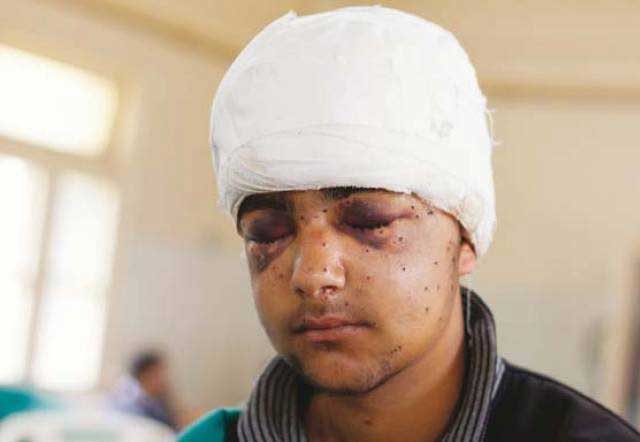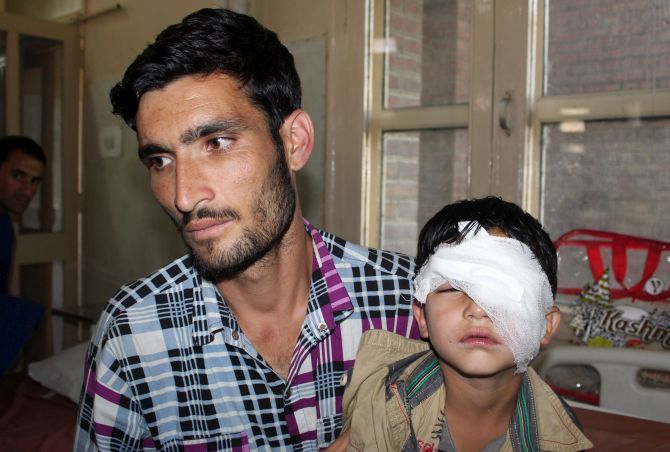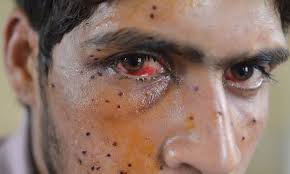CRPF chief justifies use of pellet guns on protesting Kashmiris

The CRPF has received widespread criticism for its use of pellet guns in occupied Kashmir.
SRINAGAR (Web Desk) – Amid widespread criticism for its use of pellet guns on Kashmiri protestors, the Indian Central Reserve Police Force (CRPF) has claimed that use of pellets was the "least-lethal" option available with the force, the Press Trust of India (PTI) reported.
Addressing a press conference on Monday, Director General of Central Reserve Police Force K Durga Prasad expressed regret for injuries caused to youths due to firing of pellet guns in the Valley but justified the action carried out by the Indian forces.
ALSO READ: #IndiaCantSee campaign highlighting brutality in Kashmir goes viral
"We feel very sorry for them as youngsters have to bear injuries due to the firing of pellet guns. We ourselves are trying to use it in bare minimum so that there are less injuries. But we use them under the extreme situation when crowd control fails by other means," he said replying a volley of questions on use of pellet guns in the Indian held Kashmir.
A large number of youths have been injured in the last fortnight when CRPF personnel used pellet guns to disperse protesters in the wake of killing of Burhan Wani, a commander of Hizbul Mujahideen.



Over 2,000 people have been injured, most to their eyes owing to small steel pellets fired by Indian forces.
Prasad said the CRPF is already experimenting with the other options under the less-lethal weapon category available globally.
He said as many as 114 companies (about 11,400 personnel), which were undergoing training elsewhere, had to be pulled out and deployed in the state to control the situation.
According to a report, the Indian security forces have used 2,223 pellet cartridges of different sizes, 4,821 smoke shells, 892 tear smoke grenades, 1,048 rubber bullets, 103 multi button shells, 1,614 plastic pellets and 136 stun grenades to control protesters in different parts of the state during the unrest.
More than 56 people have been killed and around 5,000 wounded since protests erupted after the killing of Hizbul Mujahideen commander Burhan Wani on July 8.
Normal life remains paralyzed because of the curfew imposed by the government and calls for a shutdown by separatist leaders.


